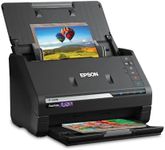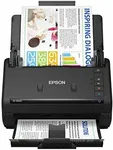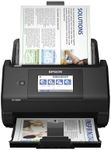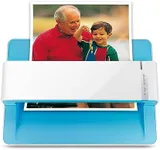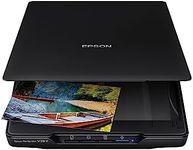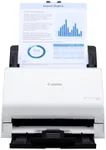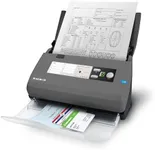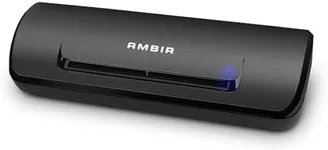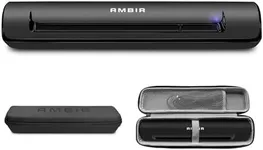Buying Guide for the Best Feeder Photo Scanner
Choosing the right feeder photo scanner can be a game-changer for digitizing your photo collection efficiently. A feeder photo scanner allows you to scan multiple photos quickly, saving you time and effort compared to flatbed scanners. To make the best choice, you need to consider several key specifications that will determine the scanner's performance and suitability for your needs. Understanding these specs will help you find a scanner that meets your requirements and provides high-quality digital images.ResolutionResolution is measured in dots per inch (DPI) and indicates the level of detail the scanner can capture. Higher resolution means more detail and better quality images. For most photo scanning needs, a resolution of 300-600 DPI is sufficient. If you need to enlarge photos or require very high detail, look for scanners with 1200 DPI or higher. Consider your end use: for general archiving, 300-600 DPI is usually enough, but for professional or high-detail work, higher DPI is better.
SpeedSpeed refers to how quickly the scanner can process photos, usually measured in pages per minute (PPM) or images per minute (IPM). Faster scanners can save you a lot of time, especially if you have a large number of photos to digitize. Scanners with speeds of 10-20 PPM are good for moderate use, while those with 20-40 PPM or higher are better for heavy-duty scanning. Think about the volume of photos you need to scan and how much time you can dedicate to the task.
Automatic Document Feeder (ADF) CapacityADF capacity indicates how many photos the scanner can hold and process at once. A higher capacity means you can load more photos and let the scanner work without constant supervision. For small to medium projects, an ADF capacity of 20-50 sheets is usually sufficient. For larger projects, look for scanners with capacities of 50 sheets or more. Consider how many photos you typically scan in one session to determine the right capacity for you.
Color DepthColor depth, measured in bits, determines how accurately the scanner can capture colors. Higher color depth results in more vibrant and true-to-life images. Most modern scanners offer 24-bit color depth, which is adequate for most users. For professional use or if you need the highest color accuracy, look for scanners with 30-bit or higher color depth. Think about the importance of color accuracy in your scanned images when choosing the color depth.
ConnectivityConnectivity options determine how you can connect the scanner to your computer or network. Common options include USB, Wi-Fi, and Ethernet. USB is standard and reliable for direct connections, while Wi-Fi and Ethernet offer more flexibility, especially if you need to share the scanner with multiple devices. Consider your setup and how you plan to use the scanner. If you need to scan directly to cloud services or multiple devices, Wi-Fi or Ethernet might be more convenient.
Software and CompatibilityThe software that comes with the scanner can greatly affect your scanning experience. Look for scanners that include user-friendly software with features like automatic cropping, color correction, and file organization. Compatibility with your operating system (Windows, macOS, etc.) is also crucial. Ensure the scanner's software supports your OS and meets your needs for editing and organizing scanned images. Think about the features you need and check for software that simplifies your workflow.
Size and PortabilityThe physical size and portability of the scanner can be important, especially if you have limited space or need to move the scanner frequently. Compact and lightweight models are easier to store and transport. However, larger models might offer more features or higher capacities. Consider where you will use the scanner and how often you might need to move it. Choose a size that fits your space and meets your mobility needs.
